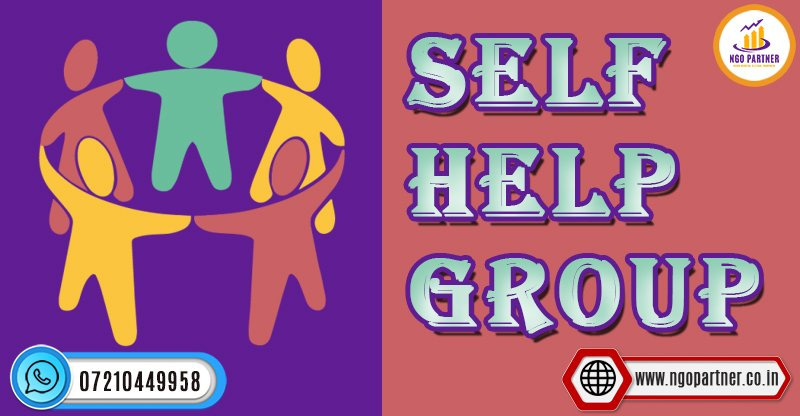
- June 20, 2023
- NGO Partner
- 0 Comments
- 910 Views
- 0 Likes
- Marketing Company Blogs
Top 10 Self Help Groups
Self Help Groups
Self Help Groups (SHGs) are grassroots-level community-based organizations that bring together individuals with similar socio-economic backgrounds and interests. These groups are formed with the aim of empowering their members through mutual support, economic activities, and social development. The concept of Self Help Groups originated as a means to uplift marginalized communities and has gained significant recognition worldwide for its impact on community development.

The purpose of Self Help Groups is to create a platform where individuals can come together to address common challenges, share resources, and collectively work towards their socio-economic advancement. These groups foster a sense of solidarity, encourage self-reliance, and promote inclusivity among their members.
The importance of Self Help Groups in community development cannot be overstated. They serve as catalysts for positive change by promoting financial inclusion, entrepreneurship, and social empowerment. Through regular savings and internal lending mechanisms, SHGs enable their members to access credit, start income-generating activities, and improve their livelihoods. Moreover, SHGs also provide a supportive environment for skill development, capacity building, and knowledge sharing.
List Of Top 10 Self Help Groups in India
Here’s a list of some of the top self-help groups in India:
- Bhai Bhauni
- Chaumunda Bachat Mandal
- Chintan
- Chamoli SHG
- Dehradun self-help group
- Geeta Kurmi
- GULM self-help group
- Gram Chetna
- Amba Foundation
- Ambe Mandal
Understanding Self Help Groups
Definition and Principles: Self Help Groups (SHGs) are community-based organizations that consist of individuals with similar socio-economic backgrounds and interests. They follow the principles of mutual trust, collective responsibility, and self-reliance. SHGs operate on the belief that members can overcome challenges and improve their lives through joint efforts and support.
Objectives and Functions: The primary objectives of SHGs are to promote economic empowerment, social support, and community development. They aim to alleviate poverty, enhance livelihoods, and foster inclusive growth. SHGs function as platforms for members to pool their resources, engage in income generation activities, and collectively address social issues affecting their communities.
Types of Self Help Groups: There are different types of SHGs based on their focus and target beneficiaries. Women SHGs specifically aim to empower women and address gender disparities. Livelihood-oriented SHGs focus on income generation activities, while savings-based SHGs primarily emphasize savings and credit activities. Community-based SHGs work towards the overall development of the community and address broader social issues.
Benefits and Impact of Self Help Groups
Economic Empowerment:
Microfinance and Savings: SHGs provide access to microfinance services, allowing members to secure loans for various purposes, including setting up businesses, investing in agriculture, or meeting personal needs. Additionally, they encourage regular savings, promoting financial discipline and stability.
Income Generation Activities: SHGs support members in developing income-generating skills and ventures. They provide training, market linkages, and support in product marketing, enabling members to improve their economic conditions.
Social Support and Empowerment:
Skill Development and Training: SHGs organize skill development programs, workshops, and vocational training to enhance members’ capabilities and employability. This equips them with valuable skills and knowledge for personal and professional growth.
Women’s Empowerment: SHGs play a crucial role in empowering women by promoting gender equality, building self-confidence, and enabling them to participate actively in decision-making processes. They provide a safe space for women to discuss and address their concerns.
Community Development:
Collective Action and Collaboration: SHGs encourage collective action and collaboration among members to address common issues and challenges faced by their communities. By working together, they can advocate for their rights, demand social services, and initiate community development projects.
Strengthening Local Governance: SHGs actively participate in local governance and community-level decision-making processes. They voice community concerns, engage with local authorities, and contribute to the development planning and implementation at the grassroots level.
Formation and Operation of Self Help Groups
Formation Process:
Mobilization and Formation: SHGs are formed through community mobilization efforts, wherein potential members are identified and brought together. They undergo orientation sessions to understand the concept, objectives, and functioning of SHGs.
Group Dynamics and Leadership: SHGs establish internal structures, including leaders and office bearers. Group dynamics are nurtured to foster cooperation, trust, and collective decision-making among members.
Group Structure and Decision-Making:
Roles and Responsibilities: Each member of an SHG has specific roles and responsibilities within the group. This promotes accountability and equitable participation. Roles may include positions such as president, treasurer, or secretary.
Savings and Loan Management: SHGs emphasize regular savings by members, contributing to a collective fund. The group manages the fund and facilitates loan disbursement to members based on their needs and repayment capabilities.
Self Help Groups have proven to be effective in bringing about positive changes in the lives of individuals and communities. By empowering members economically, providing social support, and promoting community development, SHGs serve as catalysts for sustainable progress and social transformation.
Success Stories and Case Studies
Impact on Livelihoods:
Entrepreneurship and Small Businesses: Several self-help groups have successfully established small businesses, such as handicrafts, tailoring, or food processing ventures. These initiatives have generated employment opportunities, increased income levels, and contributed to local economic growth.
Agriculture and Farming Initiatives: SHGs involved in agriculture have implemented innovative farming techniques, improved irrigation methods, and collectively marketed their produce. These efforts have enhanced agricultural productivity, increased farmers’ income, and strengthened food security in their communities.
Women’s Empowerment and Social Transformation:
Education and Skill Development: SHGs have played a pivotal role in promoting women’s education and skill development. Many success stories highlight how women who were once deprived of educational opportunities have acquired literacy, vocational training, and professional skills, leading to improved socio-economic status and empowerment.
Health and Well-being: SHGs have addressed health-related challenges by organizing awareness campaigns, conducting health camps, and creating a support network for women’s health issues. These initiatives have contributed to better healthcare access, improved health-seeking behaviors, and enhanced well-being among women.
Challenges and Solutions
Financial Sustainability:
Access to Credit and Capital: SHGs face challenges in accessing formal financial institutions for credit and capital. Solutions include linking SHGs with microfinance institutions, promoting government-sponsored credit schemes, and facilitating financial literacy and inclusion programs.
Income Diversification: SHGs can explore income-generating activities beyond their primary occupations. This involves diversifying livelihood options, identifying market trends, and providing training on alternative income streams.
Capacity Building and Training:
Technical Skills and Knowledge Enhancement: SHGs need continuous capacity building to enhance their technical skills and knowledge in various sectors. Training programs on entrepreneurship, marketing, financial management, and technological advancements can equip members with the necessary expertise.
Leadership Development: Empowering SHG members with leadership skills ensures the sustainability and effectiveness of the groups. Leadership development programs, mentorship, and exposure to best practices can enhance the leadership capabilities of SHG members.
Social and Cultural Barriers:
Gender Inequality and Discrimination: Addressing gender inequalities within SHGs and their communities is crucial. Promoting gender-sensitive practices, challenging patriarchal norms, and encouraging equal participation and decision-making empower women within SHGs.
Social Stigma and Marginalization: Some SHGs face social stigma and marginalization based on caste, religion, or other factors. Creating awareness, promoting inclusivity, and fostering a supportive environment can help overcome these barriers.
Government Initiatives and Support
Policy Framework and Regulations: Governments play a crucial role in creating an enabling environment for SHGs. They formulate policies and regulations that promote SHG formation, provide legal recognition, and ensure a favorable ecosystem for their sustainable growth.
Funding and Financial Assistance: Governments offer funding and financial assistance through various schemes and programs. Grants, subsidies, and loans are provided to SHGs for capacity building, income-generation activities, and infrastructure development.
Training and Capacity Building Programs: Governments conduct training and capacity building programs to enhance the skills of SHG members. These programs cover areas such as entrepreneurship, financial management, marketing, and governance, strengthening the overall functioning of SHGs.
Self Help Groups have transformed lives and communities by uplifting livelihoods, empowering women, and addressing social challenges. Despite the obstacles they face, the resilience, determination, and support provided by various stakeholders have enabled SHGs to create lasting positive change. With continued efforts, collaboration, and support, the impact of Self Help Groups can be further amplified, leading to a more inclusive and equitable society.
In conclusion, Self Help Groups (SHGs) have emerged as powerful instruments of change, fostering economic empowerment, social transformation, and community development. Through their collective efforts, SHGs have uplifted livelihoods, empowered women, and addressed societal challenges. The success stories and case studies highlight the significant impact SHGs have had on individuals and communities, creating a ripple effect of positive change. As we wrap up this discussion, let us recognize the importance of embracing the concept of SHGs and supporting their growth. By encouraging the formation of SHGs, providing financial assistance, and promoting capacity building, we can unlock the full potential of individuals and communities, paving the way for a more inclusive and prosperous future. Let us join hands and actively contribute to the growth and sustainability of Self Help Groups for the betterment of society.
Related: Right to Equality
Self-help groups are small, peer-driven groups that meet regularly to provide support and encouragement to members who are facing similar challenges. There are self-help groups for almost everything, including addiction, anxiety, depression, grief, parenting, chronic illness, and more.
There is no central registry that keeps track of all self-help groups in India. However, estimates suggest there are around 12 million self-help groups in India.
While there are no official categories, Indian SHGs broadly focus on income generation (handicrafts, services), savings & loans (low interest loans for members), or social development (education, healthcare, women’s empowerment).
SHGs are small (10-20 people) with regular meetings for shared savings & low-interest loans. Decisions are made together to achieve a common goal like economic betterment or social development.




Leave a Comment